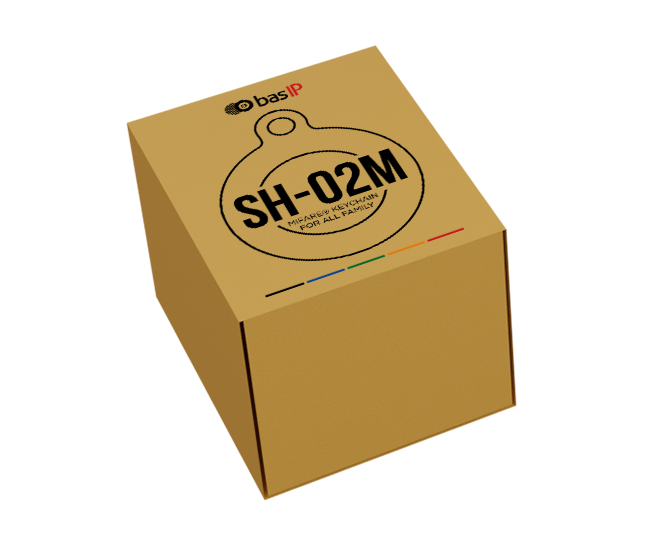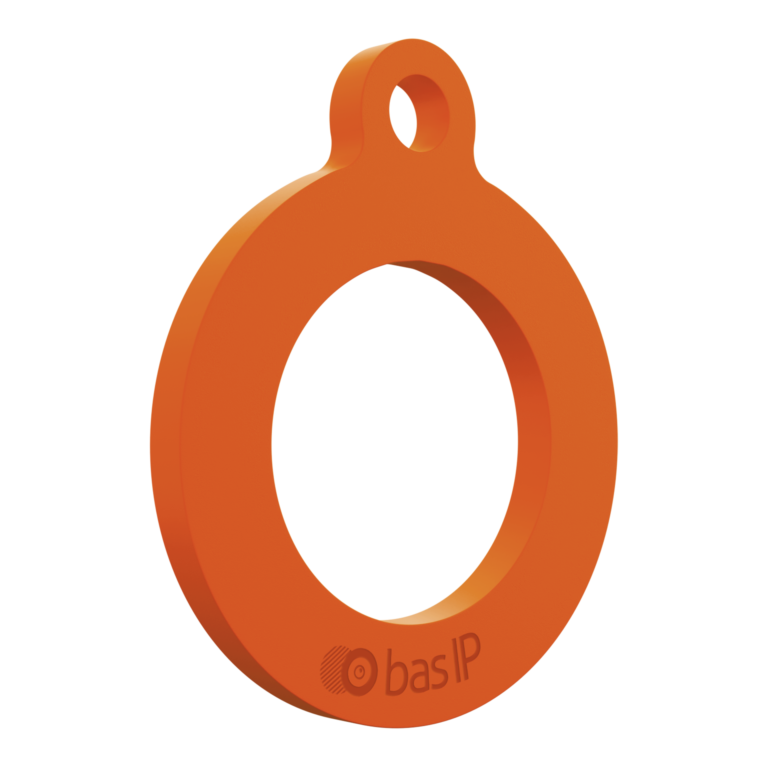RFID Meaning Unveiled: A Comprehensive Guide to Radio Frequency Identification

Radio Frequency Identification, or RFID, is a technology that has revolutionized various sectors, from supply chain management to healthcare. But what exactly is RFID, and how does it work? This article delves into the RFID meaning, its working principle, and its diverse applications.
Table of Contents
What is RFID?
RFID, or Radio Frequency Identification, is a technology used to store and retrieve data through devices called RFID tags. These tags, which can be attached to or embedded in objects, emit a radio signal with information about the object. This information can be picked up by an RFID reader, allowing for tracking and identification of the object. This technology is widely used in various industries, such as access control, retail for inventory management, logistics for tracking shipments, and healthcare for patient and equipment tracking.
Understanding RFID
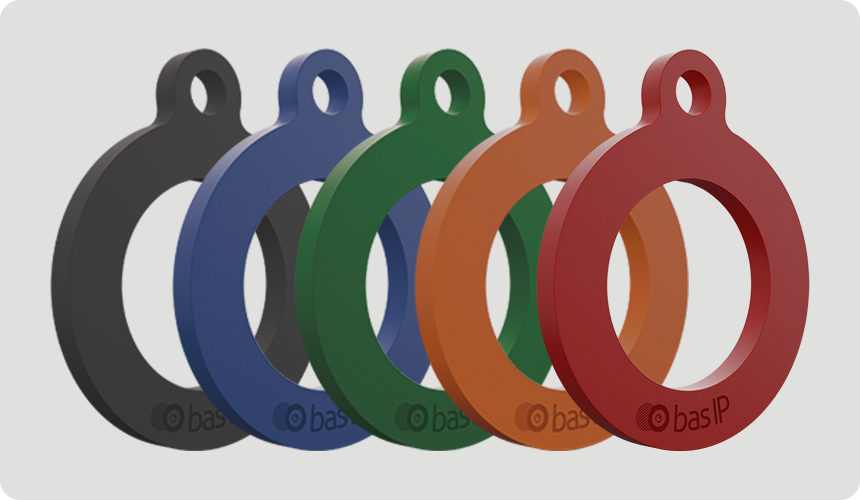
How Does RFID Work?
The RFID working principle is based on the use of radio waves for communication between a tag and a reader.
Here’s a simplified explanation of how it works:
- Tagging: An RFID tag, which contains a microchip and an antenna, is attached to an object. The microchip stores data about the object, such as its identification code or other specific details.
- Reading: An RFID reader sends out radio waves to the RFID tag. The tag responds by transmitting its stored data back to the reader.
- Processing: The reader then sends this data to a computer system for processing and integration into applications.
This technology allows for non-contact, non-line-of-sight reading, meaning the reader can pick up the signal from the tag even if it’s not directly in front of it or if the tag is covered by other objects. This makes RFID a powerful tool for various applications, including inventory management, asset tracking, and access control.
The Components of RFID Systems
An RFID system comprises three main components: the RFID tag, the RFID reader, and the antenna. The tag stores data, the reader retrieves this data, and the antenna facilitates communication between the two.
| Component | Description | Function |
|---|---|---|
| RFID Tag | An RFID tag is a small device that contains a microchip and an antenna. The microchip stores data about the object it’s attached to. | The tag’s primary function is to transmit this data to the RFID reader when it’s activated by radio waves. |
| RFID Reader | The RFID reader is a device that sends out radio waves and receives signals back from the RFID tag. | The reader’s function is to communicate with the RFID tag, retrieve the data stored on it, and then pass this data to a computer system for processing. |
| Antenna | The antenna is a part of both the RFID tag and the reader. It’s responsible for transmitting and receiving radio waves. | In the tag, the antenna receives radio waves from the reader, which powers the tag and prompts it to send its data. In the reader, the antenna sends out radio waves to activate the tag and then receives the signal back from the tag. |
These three components work together to enable the tracking and identification of objects in an RFID system.
Types of RFID Systems
RFID systems can be broadly categorized into three types based on the power source of the tags: Active RFID, Passive RFID, and Semi-Passive RFID.
Active RFID
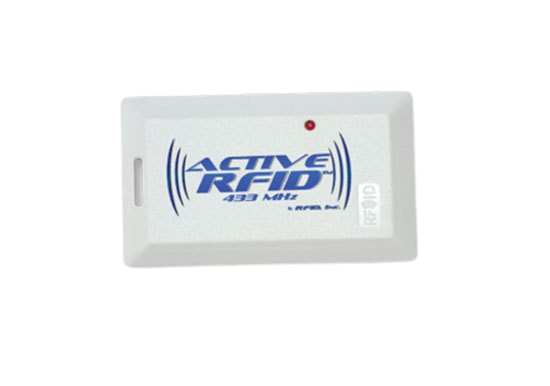
Active RFID tags have their own power source, typically a battery. This allows them to broadcast a signal to the reader independently, making them ideal for tracking high-value items over long distances. However, due to their power source, they are larger, more expensive, and require more maintenance than other types of tags.
Passive RFID

Passive RFID tags do not have their own power source. Instead, they draw power from the reader’s electromagnetic field. When the tag comes within range of the reader, the antenna within the tag picks up the radio waves and uses the energy to power the chip, which then sends its information back to the reader. Passive tags are smaller, cheaper, and more durable than active tags, but they have a shorter read range and require a strong signal from the reader.
Semi-Passive RFID
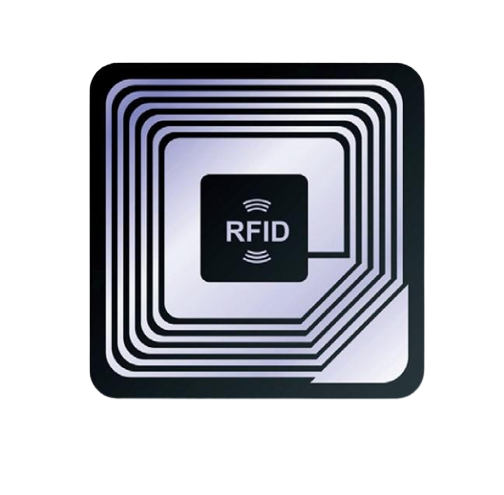
Semi-Passive RFID tags, also known as battery-assisted passive (BAP) tags, are a hybrid of the two. They have a small battery that powers the microchip’s circuitry, but they still rely on the reader for communication. This allows them to have a longer read range than passive tags while being less expensive and smaller than active tags.
Each type of RFID system has its own advantages and is suited to different applications. The choice between active, passive, and semi-passive RFID depends on the specific requirements of the use case, such as the required read range, the environment, and the budget.
| Type | Power Source | Read Range | Typical Implementations |
|---|---|---|---|
| Active RFID | Has its own power source, typically a battery. | Long (up to 100 meters or more) | Used in large-scale applications like tracking shipping containers, monitoring assets in large facilities, vehicle tracking, and wildlife tracking. |
| Passive RFID | Draws power from the reader’s electromagnetic field. | Short (up to 25 meters) | Commonly used in retail for inventory management, in libraries for book tracking, in access control systems, and in supply chain management for tracking goods. |
| Semi-Passive RFID | Has a small battery that powers the microchip’s circuitry, but relies on the reader for communication. | Medium (greater than passive, but less than active) | Used in applications that require a longer read range than passive RFID can provide, but where the cost and size of active RFID are prohibitive. Examples include cold chain monitoring, asset tracking, and healthcare applications. |
Frequencies Used in RFID
RFID systems operate on different frequencies, including Low Frequency (LF), High Frequency (HF), and Ultra-High Frequency (UHF).
Low Frequency (LF)
LF RFID systems operate at a frequency of 125 to 134 kHz. They are typically used for access control and animal identification.
High Frequency (HF)
HF RFID systems operate at 13.56 MHz and are commonly used in ticketing systems and payment cards.
Ultra-High Frequency (UHF)
UHF RFID systems operate between 860 and 960 MHz. They offer longer read ranges and faster data transfer rates, making them ideal for supply chain management.
| Frequency | Range | Data Transfer Rate | Typical Implementations |
|---|---|---|---|
| Low Frequency (LF) | Short (up to 10 cm) | Slow | Commonly used for applications like animal identification, access control, and automobile immobilization. |
| High Frequency (HF) | Medium (up to 1 meter) | Moderate | Often used in applications like access control, ticketing systems, payment cards, and library book tracking due to its ability to work effectively near the human body and metals. |
| Ultra-High Frequency (UHF) | Long (up to 12 meters) | Fast | Ideal for supply chain management, race timing, and inventory tracking due to its long read range and high data transfer rate. |
RFID Tags and Readers
RFID tags and readers are the heart of any RFID system. The tags store data, while the readers retrieve this data.
Different Types of RFID Tags
RFID tags come in various forms, including passive tags, active tags, and semi-passive tags. The type of tag used depends on the application and the required read range.
How RFID Readers Work
RFID readers work by emitting radio waves. When a tag enters the reader’s field, it responds with its stored information.
Applications of RFID
RFID technology has a wide range of applications across various sectors.
| Application | Typical Implementations | Benefits | Examples |
|---|---|---|---|
| Supply Chain Management | Warehouses, distribution centers, retail stores. | Real-time visibility of goods, improved inventory management, reduced errors and costs. | Tracking goods from manufacturer to retailer, automated inventory counting. |
| Retail | Retail stores, supermarkets, clothing stores. | Improved inventory management, theft prevention, enhanced customer experience. | Smart fitting rooms, self-checkout systems, real-time inventory tracking. |
| Healthcare | Hospitals, clinics, nursing homes. | Patient tracking, equipment tracking, ensuring the right medication reaches the right patient. | Patient wristbands, tracking medical equipment, ensuring correct medication administration. |
| Agriculture | Farms, livestock management. | Livestock tracking, crop management, farm equipment tracking. | Tracking the health and location of livestock, monitoring crop conditions, tracking farm equipment. |
| Security and Access Control | Offices, residential buildings, restricted areas. | Secure and efficient entry and exit systems, tracking and managing access. | Employee ID cards for access control, tracking assets in restricted areas. |
These are just a few examples of the many applications of RFID. The technology’s versatility and efficiency make it a valuable tool in a wide range of industries and use cases.
Advantages and Disadvantages of RFID
RFID technology offers a number of advantages but also comes with certain disadvantages. Here’s a detailed look at both:
Advantages of RFID:
- No Line-of-Sight Requirement: Unlike barcodes, RFID does not require line-of-sight to read data. This means that RFID tags can be read through materials without direct contact, making it a versatile solution for various applications.
- Automation and Speed: RFID readers can read multiple tags simultaneously and quickly, making data collection faster and more efficient. This can significantly improve inventory management and tracking processes.
- Large Data Capacity: RFID tags can store a large amount of data, which can include information beyond just an identification number, such as manufacturer details, product type, and even maintenance history.
- Durability: RFID tags are typically more robust and durable than barcodes. They can withstand harsh environments, which makes them suitable for use in a wide range of industries.
- Reusability: RFID tags can be rewritten and reused, which can be cost-effective in certain applications.
Disadvantages of RFID:
- Cost: RFID systems can be more expensive to implement than other tracking technologies like barcodes. The cost of RFID tags, readers, and implementation can be a barrier for some businesses.
- Interference Issues: RFID systems can be susceptible to interference from other radio wave-emitting devices or materials like metal and water, which can affect the system’s performance.
- Security and Privacy Concerns: Since RFID tags can be read remotely, there are concerns about data security and privacy. Unauthorized readers may potentially access information on the tags.
- Standardization Issues: There are various types of RFID systems operating at different frequencies, which can lead to compatibility issues. This lack of standardization can complicate the implementation of RFID systems.
Comparing RFID with Other Technologies
RFID technology is often compared with other similar technologies, such as barcodes, NFC, and Bluetooth.
| Technology | Description | Use Cases | Advantages | Disadvantages |
|---|---|---|---|---|
| RFID | Uses radio waves to read and capture information stored on a tag attached to an object. | Inventory management, asset tracking, access control. | Can read multiple tags at once, doesn’t require line-of-sight, tags have a large memory capacity. | More expensive than barcodes, potential privacy issues. |
| Barcodes | Uses optical, machine-readable representation of data, which shows data about the object to which it is attached. | Retail, inventory management, ticketing systems. | Low cost, easy to implement and use. | Requires line-of-sight, can only be read one at a time, limited data capacity. |
| NFC (Near Field Communication) | A set of communication protocols for communication between two electronic devices over a distance of 4 cm or less. | Contactless payments, electronic ticketing, device pairing. | Easy to use, high level of security. | Short range, slower data transfer rate compared to RFID and Bluetooth. |
| Bluetooth | A wireless technology standard used for exchanging data between fixed and mobile devices over short distances. | Device pairing, data sharing, personal area networks. | Long range, high data transfer rate. | Higher power consumption, potential security issues. |
Each technology has its own strengths and weaknesses and is suited to different applications. The choice between RFID, Barcodes, NFC, and Bluetooth depends on the specific requirements of the use case, such as the required range, the environment, and the data transfer rate.
Leading Manufacturers of RFID Technology

Here are some of the key players in the RFID industry:
- Zebra Technologies: Zebra is a leading manufacturer of RFID printers, readers, and antennas. They offer a wide range of solutions for various industries, including retail, healthcare, and manufacturing.
- Impinj: Impinj is a leading provider of RAIN RFID solutions, which are used to wirelessly connect billions of everyday items to the internet. They offer RFID tags, readers, and software.
- NXP Semiconductors: NXP is a major player in the RFID space, particularly known for their RFID chips. They offer solutions for a variety of applications, including inventory management, asset tracking, and contactless payment systems.
- Alien Technology: Alien Technology is a well-known manufacturer of RFID technology, offering high-performance RFID tags and readers.
- Honeywell: Honeywell provides a range of RFID solutions, including RFID readers and antennas, designed for high-performance reading of RFID tags.
- Avery Dennison: Avery Dennison is a global leader in RFID-enabled labels. They offer a wide range of RFID products, from inlays to tags to printers.
These companies have made significant contributions to the development and advancement of RFID technology, and they continue to innovate in this space.
Major Companies Investing in RFID Technology

Several companies have made significant investments in RFID technology due to its potential to improve efficiency, reduce costs, and enhance data accuracy. Here are a few notable examples:
- Walmart: One of the earliest and most well-known adopters of RFID, Walmart has used the technology to improve its supply chain efficiency and inventory management.
- Amazon: Amazon uses RFID technology in its warehouses to track products and automate inventory management. The company has also experimented with RFID in its Amazon Go stores, which allow customers to shop and checkout without interacting with a cashier.
- Zara: The fashion retailer Zara uses RFID to track every piece of clothing from production to sale, helping it to manage its inventory more effectively and respond quickly to changing fashion trends.
- Delta Airlines: Delta has invested in RFID technology for tracking baggage, improving accuracy and reducing the number of lost bags.
- DHL: The logistics company DHL uses RFID for tracking parcels and assets, improving the efficiency of its operations and providing better service to its customers.
- BAS-IP: BAS-IP uses RFID technology in their access control systems, providing secure and efficient entry and exit solutions. Their systems are designed to offer high levels of security and convenience, making them a popular choice for businesses and residential buildings.
These companies represent just a few examples of the many businesses that have recognized the benefits of RFID and invested in the technology. As RFID continues to evolve and improve, it’s likely that more and more companies will adopt it as part of their operations.
The Future of RFID
The future of RFID technology looks promising, with advancements expected to drive its adoption in various sectors and applications.
- Internet of Things (IoT): As the IoT continues to grow, RFID is expected to play a significant role in connecting physical objects to the digital world. RFID tags can provide unique identifiers for objects, enabling them to be tracked and monitored in real-time. This can facilitate more efficient inventory management, asset tracking, and supply chain management.
- Integration with Other Technologies: RFID is expected to be increasingly integrated with other technologies, such as sensors and cloud computing. This can enable more advanced applications, such as smart shelves in retail that can automatically track inventory, or smart hospitals where patient care equipment is tracked in real-time.
- Improved Data Capacity and Read Range: Advances in RFID technology are expected to improve the data capacity of RFID tags and the read range of RFID systems. This can enable more detailed tracking of objects and extend the range of applications for RFID.
- Lower Costs: As the technology matures and adoption increases, the cost of RFID systems is expected to decrease. This can make RFID more accessible to small and medium-sized businesses and drive its adoption in new sectors.
- Enhanced Security Features: In response to concerns about data security and privacy, future RFID systems are expected to feature enhanced security measures. This can include encryption, authentication, and other methods to protect data and prevent unauthorized access.
Conclusion
Understanding the RFID meaning and its applications is crucial in today’s digital age. As we move towards a more connected world, RFID technology will continue to play a pivotal role in various sectors.
This comprehensive guide has provided an in-depth look into RFID, its working principle, and its applications. As we continue to explore and innovate, the potential of RFID technology is limitless.
FAQs
- What is the meaning of RFID?
- How does RFID work?
- What are the components of an RFID system?
- What are the different types of RFID systems?
- How are RFID tags and readers used?
- What are the applications of RFID in different sectors?
- What are the advantages and disadvantages of RFID?
- How does RFID compare with other technologies like barcodes, NFC, and Bluetooth?
- What is the future of RFID?
